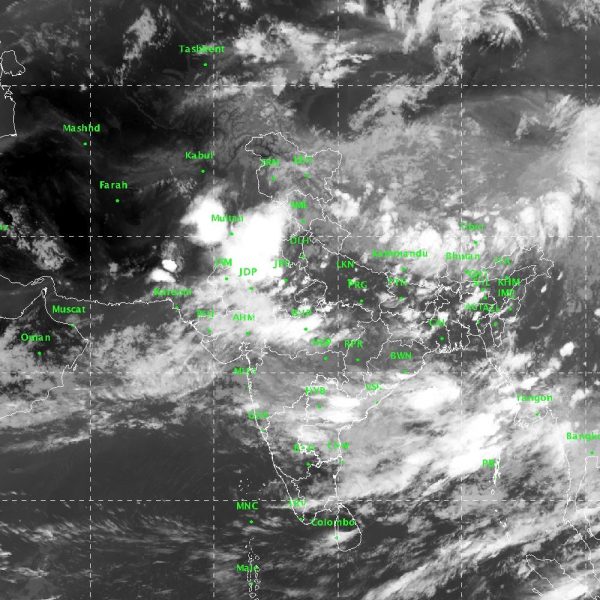
Why IMD fails to predict rainfall correctly? Can it be blamed for system failure?
The retreating monsoon in India is expected to begin on October 10 as said by the MeT department. This will be the latest ever monsoon retreat in a year. Last time, the latest retreat was recorded in 1961 when it began on October 1. The question is why IMD fails to predict rainfall correctly?
The monsoonal rain has been at maximum in 2019 so far. However, the Indian Meteorological Department (IMD) has failed to predict that the monsoon would be this strong this year. Heavy rains are still continuing in Bihar and some parts of Karnataka. Almost 70% of the Bihar is still submerged into water somehow and the rest is struggling to come to terms with the severe drought it has faced.
The uncertain prediction would be normal in India if we wouldn’t have access to the latest technology. After the economic boom in the country, funds went into monsoon research that developed a new model- Monsoon Mission Coupled Forecast Model, also known as Coupled Forecast System (CFS). The CFS promised to predict the pattern of season weather accurately and prevent people especially farmers from the vagaries of the monsoonal uncertainty.
More than Rs 12,000 crore has been spent on developing the model
About Rs. 12,000 crore is estimated to be spent on developing the model. But the Indian Meteorological Department has failed to predict on August 1 that the rainfall would be 130% of the normal rainfall in the month of August and September. The correct prediction could have helped the preparation of the administration, particularly in Bihar.
IMD said on August 1 that the monsoon rain will be 100 % of what is the normal rainfall with a variation of 8 per cent on the higher side. But the monsoon proved the prediction wrong as it exceeded 22 percentage points stronger.
Read more: PMC Bank Fraud: Six Location raided in Mumbai by ED, case registered against Bank officials
Some independent weather scientists while writing analysis for various publication expressed surprise on the inability of the IMD’s dynamic monsoon model to not predict the amount of rain correctly. Two points were put for reference to IMD’s failure of assessing the amount of rainfall.
The first one is Indian Ocean Dipole, which gave a sign of the temperature condition for the sustenance of monsoon over India’s mainland. The readings were favourable at the end of July for a sturdy monsoonal wind in the month of September and August. But somehow, the IMD model failed to take that into consideration.
The second factor as expressed by experts suggests that there was a weaker El Nino till the middle of August. It meant that the temperature was higher in the Indian Ocean towards the mainland India. This translates into a stronger flow of monsoon over India.
Officials also admitted their failure on predicting monsoonal rain
The officials from IMD have admitted that they have failed to deliver the accurate predictions but they attributed it to weather circumstances saying that the weather circumstances were fast-changing in nature. In simple terms, these changes were not predictable.
This year is not the first year when IMD has failed to predict the rainfall correctly. IMD said monsoon prediction has improved in the last few years and claimed accuracy up to 90 % for 1988 to 2008. However, the record in the last few years are astonishing. Since 2014, the IMD has got predictions right only in 2015. These years have also been an integral part of the discussion on climate change as it has dominated the environmental space.
Monsoonal rain prediction in last few years
IMD predicted that 104 % of the average rainfall will happen in the year in 2012 which ended up at just 93%. However, the 2013 prediction was somehow more accurate. IMD predicted 104 % of the average rainfall which ended up at 96 %.
The prediction for the year 2014 was 88% against 96% of the average rainfall. The NDA government was welcomed by nature with two consecutive years of drought.
The stark gap was witnessed in the year 2016 when the Indian Meteorological Department predicted 112% monsoonal rain which was 15% more than the actual rain. The actual rainfall in 2016 was in the zone of normal monsoon with 97% average rainfall. It was significant to the farmers as it came after two years of drought.
Conclusion
In 2019, IMD’s CFS rainfall predicted that there will 97% monsoonal rain, which has exceeded by 13% till now. In a country like India, where most of the population is dependent on monsoon for drinking water, most farmers are dependent on rain for irrigation- correct prediction of monsoon becomes a key factor for the overall well-being of the people of country and economy of the country. A correct prediction might help the laid-back administration in rescue efforts when needed.
Have a news story, an interesting write-up or simply a suggestion? Write to us at info@oneworldnews.com








